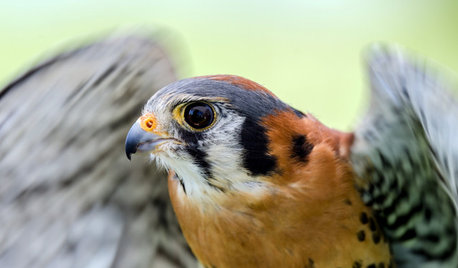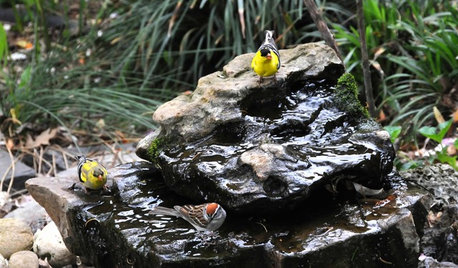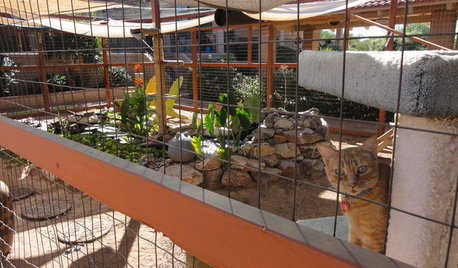OkieDawn about voles?
Auther
9 years ago
Related Stories

GARDENING GUIDESSoutheast Gardener's March Checklist
Start fresh by envisioning new plant combinations as you tend to fruit trees and rosebushes — and watch out for those darned voles
Full Story
NATIVE PLANTS5 Ways to Keep Your Native Plant Garden Looking Good All Year
It’s all about planning ahead, using sustainable practices and accepting plants as living organisms
Full Story
GARDENING GUIDESBackyard Birds: Create a Home for American Kestrels
These copper-colored birds of prey can be found throughout North and South America and often find habitats near human activity
Full Story
LANDSCAPE DESIGNGive Your Garden an Industrial Edge
Create intriguing contrast by borrowing from the factory to dress up your organic setting
Full Story
OUTDOOR PROJECTSBring In the Birds With a Homemade Bubble Rock
An avian expert from Southern Indiana shows how to make a burbling fountain that migrating birds will love
Full Story
PETSSee a Deluxe 'Catio' Built for Feline Fun
Sixteen lucky cats get the run of a protected outdoor patio with ramps, steps and even a koi pond
Full Story
GARDENING GUIDESOh, Deer! 10 Native Flowers That Stand Up to the Herds
Keeping a garden amid hungry deer can be hard, but these plants should fare well
Full Story
EDIBLE GARDENSHow to Grow Your Own Sweet Summer Crops
This guide will help any gardener get started on growing the freshest warm-season veggies and berries for summer
Full Story
GARDENING GUIDESGarden Myths to Debunk as You Dig This Fall and Rest Over Winter
Termites hate wood mulch, don’t amend soil for trees, avoid gravel in planters — and more nuggets of garden wisdom
Full Story
EDIBLE GARDENSSummer Crops: How to Grow Tomatoes
Plant tomato seedlings in spring for one of the best tastes of summer, fresh from your backyard
Full StoryMore Discussions






scottcalv
Okiedawn OK Zone 7
Related Professionals
Ashland Landscape Architects & Landscape Designers · Chattanooga Landscape Architects & Landscape Designers · Hyattsville Landscape Architects & Landscape Designers · Winder Landscape Architects & Landscape Designers · Apollo Beach Landscape Contractors · Bell Gardens Landscape Contractors · Fair Oaks Landscape Contractors · Galt Landscape Contractors · Markham Landscape Contractors · Antioch Landscape Contractors · Coatesville Decks, Patios & Outdoor Enclosures · Crystal Lake Decks, Patios & Outdoor Enclosures · Lacey Decks, Patios & Outdoor Enclosures · Lake Morton-Berrydale Decks, Patios & Outdoor Enclosures · Westfield Decks, Patios & Outdoor Enclosureshelenh
AutherOriginal Author
Okiedawn OK Zone 7
sammy zone 7 Tulsa
AutherOriginal Author
Okiedawn OK Zone 7